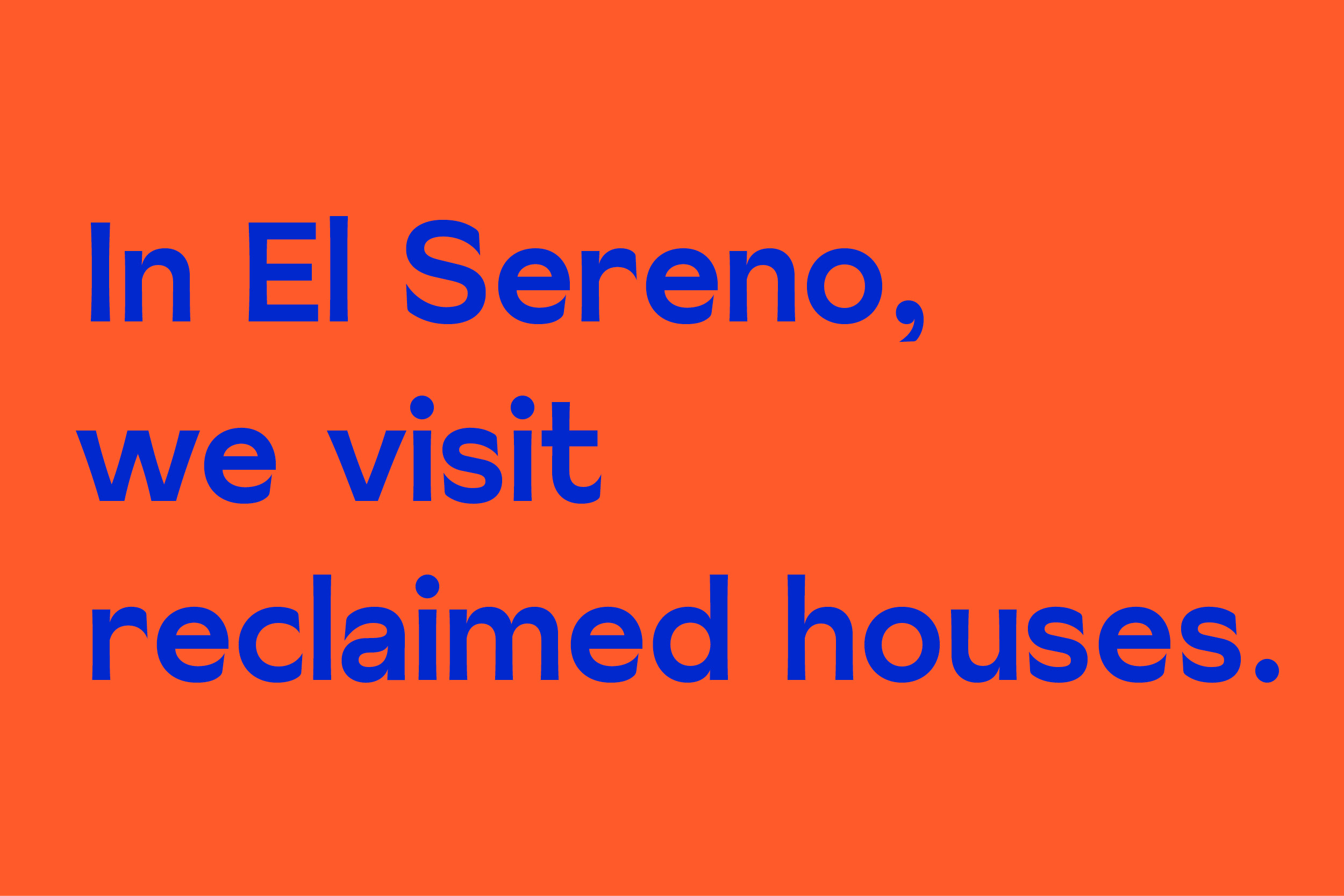2030 Hyperion Ave, Los Angeles, CA 90027
Anthony Carfello, Editor, Educator
April 23, 2022
Two entry points to Los Angeles in the early 2020s.

Bio
Anthony Carfello is co-editor of the online journal Georgia and an instructor for Temple University’s Los Angeles program. From 2009–19, he managed exhibitions at the MAK Center for Art and Architecture in West Hollywood. He is currently co-editing the forthcoming re-print and translation of the architect Giovanni Brino's Los Angeles. La città capitalista (1978).
secondarytext.com
April 23, 2022
"Do you think it is likely or unlikely that other riots and disturbances like those in 1992 will occur in the City of Los Angeles in the next five years?" asks the survey that Loyola Marymount University has conducted on each of the fifth, tenth, fifteenth, twentieth, and twenty-fifth anniversaries. 2017 yielded an increase of "Yes" responses from each category of those answering—across age, education, and race. Fifty-eight percent overall and sixty-nine percent of eighteen- to twenty-nine-year-olds viewed the same city from multiple angles and agreed that enough fumes were in the air to ignite. In 2020, sparks from the usual source of unchecked police brutality proved that data accurate.
I teach a college class where students approach L.A. through juxtaposition. We'll meet at a park, then visit another, or stop by several diners in the Valley, or stroll different boulevards. Contrasting each site as one vantage point among many, our various entries produce a "portrait" of the city, a dérive for Metro and freeways.
We'll spend today at two extremes, considering the possibilities of this year's Loyola survey and discussing why unrest was sensed last time. What were/are the signs in the landscape? I asked them to read Anna Deavere Smith's play Twilight: Los Angeles, 1992—a document of the crucial word choice, "riot" or "uprising"—shaped by two hundred interviews with locals immediately following that era-defining event.
In El Sereno, we visit reclaimed houses. Years ago, whole neighborhoods of small bungalows were taken and emptied by Caltrans for the extension of the I-710 Freeway that never occurred—in 2020, they were taken back. The students and I amble around the block after meeting with the Reclaiming Our Homes organizers who shared their experiences. We buy mangoes from a stand in someone's driveway and I ask the class if they think anyone should have been surprised that Angelenos grew indignant seeing over one hundred structures sitting unoccupied while thousands slept outside. A caricature of inequality. Sheffield Avenue has recouped its population since, with nearly ninety housed and off the street, many of them children.
The new social infrastructure continues to grow, from daycare and carpentry services to the gardens—not to mention the legal clinic as the residents continue to rack up wins in court. A woman passing on the sidewalk chats us up and asks what the students have noticed. "This, like, feeling in the air," one answers while making a fist. She elaborates, and we classify it as a spirit of refusal: refusing displacement, refusing control—menacing police continue "securing" abandoned houses, mobilizing people continue freeing them—and refusing a status quo that says once power is exerted the story ends.
The thirty-two houses reanimated to date haven't turned the tide on homelessness, but the effort has had a massive impact as a bookend to the whitewashing and gentrification of the past decades. The speculators who used to hover over the city like police helicopters now have to account for the growing movement of Californians—catalyzed by Black and Brown mothers—intent on returning vacant properties to beneficial use. I tell the class about other repossessions, from Oakland to Anaheim. One student describes it as "newly" public space.
We leave, drive, and arrive at 10000 Santa Monica Boulevard, a glaring forty-story apartment tower (named Ten Thousand) in Century City. An amenity-packed resort where both a Wellness and Performance Concierge and a Lifestyle Concierge await and the monthly rents range from $17,000 to $81,000. The hostile high-rise stands aloof from the surrounding low-profile buildings. We look up as balconies ascend on the north and south facades, running parallel to the floors rather than jutting out. Each is slightly longer on the next floor higher than the balcony below, emphasizing the edifice's internal class system.
We're denied entry by the conspicuously armed guard. I assure him that we're not protestors, claiming that we're an architecture studio enamored with the design. "May we speak to someone?" results in a resistant sales rep offering to show one of the lower-end units, if we "behave." We follow inside as an espresso is rushed out to a Jaguar pulling up, an option for request on Ten Thousand's exclusive app. Two front desk employees stare the class down as if processing facial recognition scans.
"Fortress L.A." has militarized higher ground since the 1980s, connecting today's vertical gated and segregated communities with their forebears Hidden Hills and Bel-Air. No one is here who "shouldn't" be. Home to agents, celebrities, and mini-oligarchs, refusal of the pedestrian was poured into the foundation. The Protection Concierge's phone lights up every time there's a march through Beverly Hills but the hit-and-run issue last year passed without notice.
From four levels up, the class gazes out of the floor-to-ceiling windows at the country club across the street, then down to the country club within the complex. We count the guards and trace the paths of gates. Anti-public space. Our tour leader references the butler, chef, and pet services. Fresh green juice awaits after a swim. A promo reel playing on an oversized screen informs us that "assistance with your devices from the Tech Concierge is just one text away." Every task is someone else's to do.
Back in the lobby, residents exude suspiciousness until greeted with honorifics. A student asks why there's so much security in an area that's notoriously safe, prompting vagaries from our guide about "the unique concerns of high-net-worth individuals." The refusal of others by people who require others for everything. We're told that "Ten Thousand meets all needs" as we're shown the lounge and swiftly escorted out.
Standing in the manicured median opposite the entrance, sun reflecting off of the glass turns our gaze toward eastbound traffic. We discuss which of the city's dispositions is on display inside this obstinate obelisk versus in El Sereno, which histories inform housing ostentation versus housing desperation. As much as spaces can represent lessons learned and attempts to remedy wrongs, they can also stand for a refusal to listen.
 20 ⎯⎯⎯ 20.
20 ⎯⎯⎯ 20.